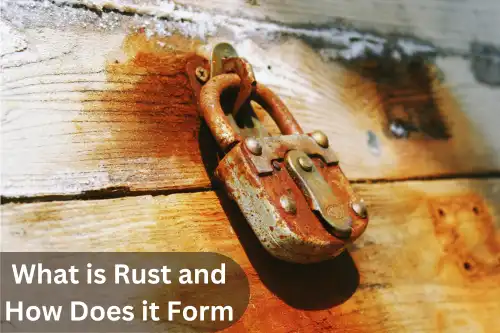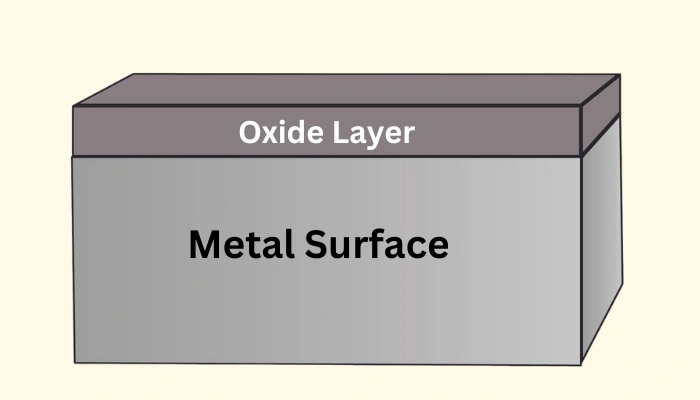Can You Weld Rusty Metal? Techniques, Challenges, and Efficient Solutions
Updated: 23 Jan 2024
86
Welding rusty metal doesn’t seem to be a big problem. Still, it presents a different set of challenges that often make welders question because rust compromises the structural integrity of the metal.
Yes, you can weld on rusty metal, but it’s not recommended. There are some conditions or metals that make welding on rusty metals impossible. Before you ever start welding on these materials, clean them or at least do something about their rust.
Welding on metal with rust is not recommended because it has different problems. It is because it weakens with time due to rust and causes porosity. Below, we define some reasons why rusty metal welding is not recommended.
Can You Weld Rusted Metal?
In your welding career, there will be a time when you face a situation in which you have to weld rusted metal. Normally, you shouldn’t weld this type of metal because it’s not professional, and most of the time, the joints have defects and are not that strong.
So, you can’t weld on rusty metal because it has many different issues, but if you are going to weld on it, then you have to take some precautions and do it properly so it has some durability left in it. Welding on a rusty metal has a lot of flaws, but before that, let’s discuss what rust is and how it’s formed.
Explanation of Rust Formation:

Rust is scientifically known as Iron oxide, which is a product of the corrosion process. It occurs whenever steel or iron reacts with oxygen and moisture, producing rust. The rust affects the strength of every metal and significantly reduces its stability with time.
People usually paint the metal to prevent it from rusting, which is one of the cheapest ways to keep your metal safe. But when you have welded, remove the paint from your metals and weld it according to your needs.
Challenges for Welding Rusty Metal:
Welding rusted metal can cause many problems you must deal with first. Some of them even affect your welding quality. Below, we define some of them, so let’s get to it without wasting any time.
Metal Become Weak:
Normally, people think rust isn’t that bad and won’t affect your materials, but it poses a real threat by weakening them. The corrosion process slowly weakens the metal and affects its structural strength.
That’s one of the reasons why welding rusty metal is not recommended. It becomes very weak and can’t hold your structure.
Contamination and Impurities:

Almost all the rusted areas have impurities or contamination that interfere with and affect the welding process. Some impurities, like moisture, dirt, and other substances, can be seen with the naked eye.
Welding with such impurities or contamination can cause defects in your welds, and as a result, you will get weak welds, which are also not durable. That’s why welding on rusty metal materials is not a good idea.
Inclusion with Porosity:
You may know that porosity is one of the welding’s big enemies. As discussed above, rust causes contamination, which is one of the main reasons for porosity, which then turns into inclusion by mixing up with different unique metals.
During the welds on rusty areas, gas (oxygen) is trapped inside little bubbles of welding, which are way denser than normal welds. The weak porosity becomes the weakest point of the weld that can’t withstand heavy load.
Poor Instability and Metal Fluidity:
The abrupt changes in the arc have different reasons. Welding on rusty metal is one of the common ones. Due to the poor surface and lack of fusion, the arc of your weld is unstable, and as a result, you will get a bad-quality weld with more spatter and sparks.
As mentioned above, rust will make the welding puddle thinner and more porose. This type of poor weld quality affects your overall metal fluidity, and you will get a bad and stiffer welding puddle.
Welding Techniques For Rusted Metals
Thoroughly Cleaning Surface:

If you have time before welding, consider cleaning the metal for welding because it’s important. It would help if you prepared the metal for welding by removing all the rust by thoroughly cleaning it.
There are different methods of cleaning the rust from the metal; sanding, wiping, or cleaning with a wire brush and abrasive blasting are common. You can use any method you like. If you can’t clean the overall metal, clean the area where welds will apply so you will have proper welds.
Addressing Weaking Areas:
While welding Rusty metal, you should address all weak areas with strategic process techniques. For example, if there are any weak areas, try to find another possible welding spot. Other than that, you should have a welding process controlled concerning heat input, like Stitch or Tack Welding, which will help you keep the integrity of your metals.
Adjusting Welding Parameters:
Whenever you weld, make sure to adjust your welding parameters according to metal needs. In this case, when you have rusty metal, you should adjust your current, voltage, and travel speed depending on the rusty metal penetration.
It’s important to keep everything according to your needs for welding to minimize the risk of overheating or further affecting your welding metal.
Conclusion:
Welding on metal is not good or recommended, but it doesn’t mean you can’t do it. You can do it, but first, you should clean it properly. You can also do it on rusty metal, but you should follow some basic steps explained in the above paragraphs.
I hope you understand what you are looking for, but if you have any welding-related questions, visit our main website.
Please Write Your Comments